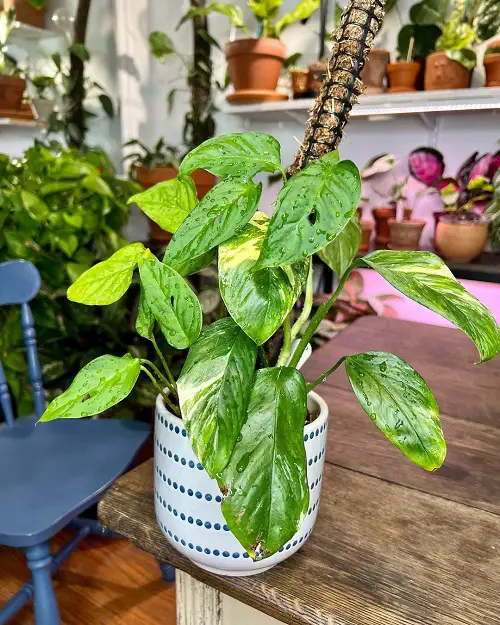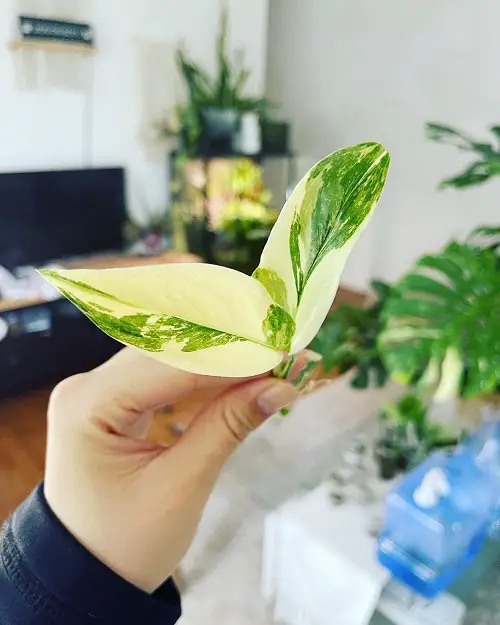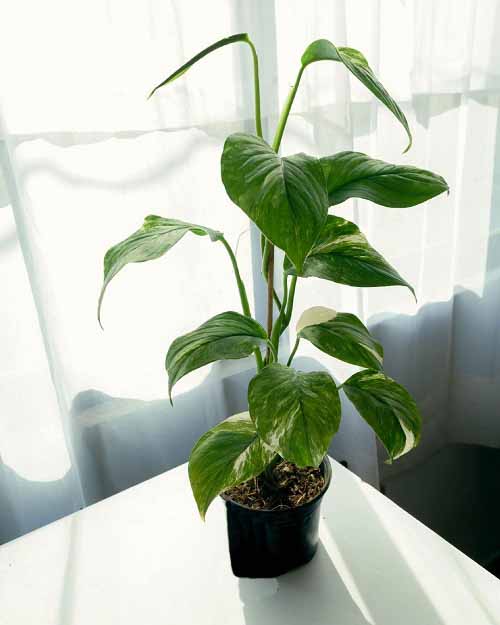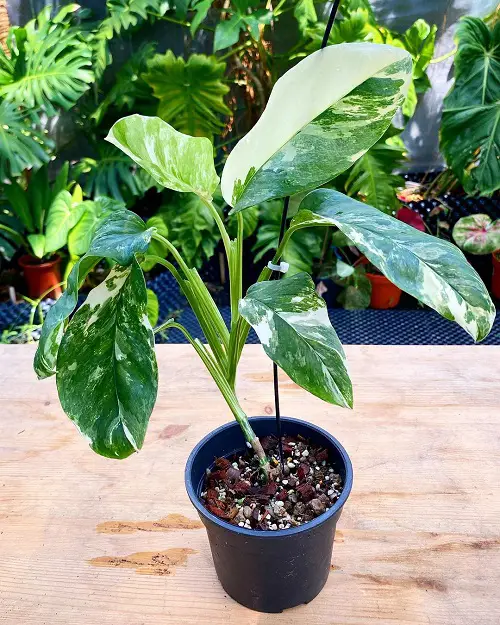Monstera Lechleriana is a beautiful gem that you must have in your indoor plant collection! Here’s how to keep it thriving!

Monstera Lechlerianas are not like typical monsteras and don’t have any fenestrations. Their leaves are bright green, often complemented by yellow patterns. Here’s everything about it.
Monstera Lechleriana Information
Monstera lechleriana is a beautiful climber that comes from Central and South America. It has large, glossy, heart-shaped leaves like other monsteras but lacks fenestration. These leaves can grow up to a foot long and are complemented by small, white flowers.
These flowers also develop into fruits, but you won’t see any if you grow them indoors. It’s a lovely houseplant, but you should keep it out of the reach of children and pets because it’s toxic if ingested. Other than that, it’s really easy to grow and care for.
Propagating Monstera Lechleriana

Stem cuttings are one of the easiest and most common ways to propagate Monstera lechleriana. Plus, with cuttings, you can rest well that the Monstera will turn out just like the parent.
Start with a healthy stem with a few leaves. It should be at least 5 inches long and should have a few nodes as well. You can get it from a local garden center or even from a friend. Let the cut end callous for a couple of days, then stick it in a small pot filled with soil. Keep this pot on a nice, sunny windowsill that gets plenty of light, and give it a gentle mist every other day.
That’s pretty much it. In a few weeks, you’ll notice that the stem has grown roots and will start growing new foliage and turning into a pretty Monstera lechleriana.
Best Pot Size for Growing Monstera Lechleriana

You don’t need to worry about pot size for growing this monstera. Start with one that’s 6 inches deep and wide. Then repot it every year or a year and a half into a pot that’s 2-3 inches bigger.
Requirements for Growing Monstera Lechleriana

Light
Bright, indirect sunlight is ideal for Monstera Lechleriana. Place it near an east-facing window for the best sun exposure and bright colors in the variegated varieties. Make sure you don’t keep it in direct afternoon sunlight to prevent leaf scorch.
Soil
Here’s a small recipe that you can use for your monsteras.
- 2 parts potting mix for the base
- 1 part perlite for drainage and aeration
- 1 part orchid bark for better drainage
Monstera lechlerianas, like their cousins, love a chunky soil mix that is well-draining and also allows good air circulation around the roots. A mix of these things will help you provide this.
Water
Lechleriana Monstera prefers moist but not soggy soil. Water it when the top inch of soil feels dry to the touch, and avoid letting it sit in water. You will only need to water it once in 10-15 days indoors.
Temperature
Monstera Lechleriana thrives in an indoor temperature range of 70°F to 90°F (21°C to 32°C). It prefers warm conditions and should be protected from temperatures below 50°F (10°C).
Monstera Lechleriana Care

Fertilizer
A balanced formula like a 20-20-20 or 10-10-10 works best for Monstera Lechleriana. But don’t give it blindly. You need to dilute it to 1/4 of its strength and apply it every 2-4 weeks. It will be more than enough to keep the plant happy and thriving.
Pruning
Occasional pruning is beneficial for Monstera Lechleriana. Use clean, sharp scissors or pruning shears to remove dead or yellowing leaves. To encourage bushier growth, trim back leggy stems just above a leaf node.
Pests and Diseases
Look out for sap-sucking insects like mealybugs and spider mites that can damage leaves. You can use a neem oil spray to get rid of these. Plus, you might face fungal problems like root rot that’s caused by overwatering. So water it properly.


